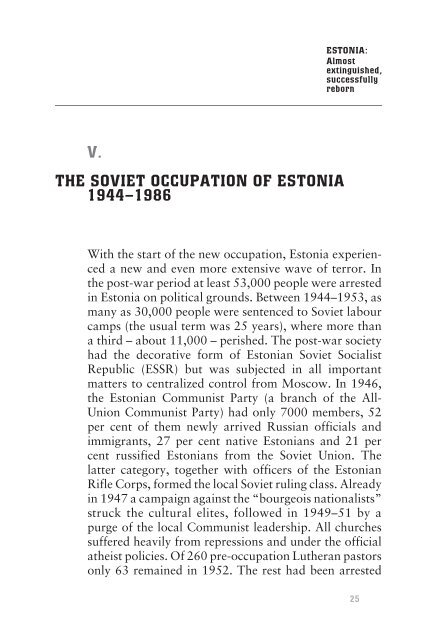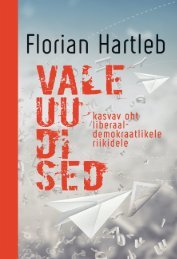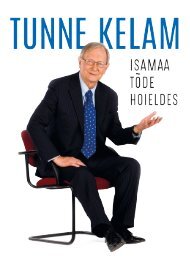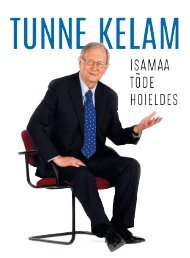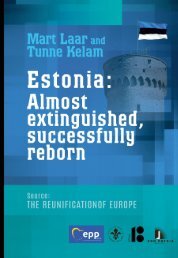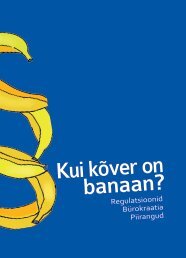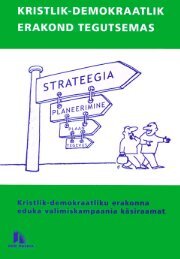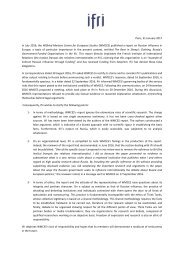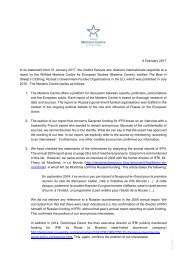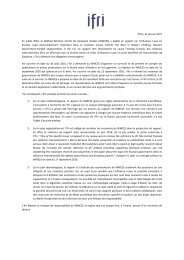Estonia: Almost extinguished, successfully reborn
The following text is the shortest possible review to help inform friends and guests from abroad about Estonia’s experience with foreign occupation and totalitarianism as well as its road to peacefully re-establishing national inde-pendence on the basis of democracy. Tunne Kelam Member of the European Parliament
The following text is the shortest possible review to help inform friends and guests from abroad about Estonia’s experience with foreign occupation and totalitarianism as well as its road to peacefully re-establishing national inde-pendence on the basis of democracy.
Tunne Kelam
Member of the European Parliament
Create successful ePaper yourself
Turn your PDF publications into a flip-book with our unique Google optimized e-Paper software.
ESTONIA:<br />
<strong>Almost</strong><br />
<strong>extinguished</strong>,<br />
<strong>successfully</strong><br />
<strong>reborn</strong><br />
V.<br />
THE SOVIET OCCUPATION OF ESTONIA<br />
1944–1986<br />
With the start of the new occupation, <strong>Estonia</strong> experienced<br />
a new and even more extensive wave of terror. In<br />
the post-war period at least 53,000 people were arrested<br />
in <strong>Estonia</strong> on political grounds. Between 1944–1953, as<br />
many as 30,000 people were sentenced to Soviet labour<br />
camps (the usual term was 25 years), where more than<br />
a third – about 11,000 – perished. The post-war society<br />
had the decorative form of <strong>Estonia</strong>n Soviet Socialist<br />
Republic (ESSR) but was subjected in all important<br />
matters to centralized control from Moscow. In 1946,<br />
the <strong>Estonia</strong>n Communist Party (a branch of the All-<br />
Union Communist Party) had only 7000 members, 52<br />
per cent of them newly arrived Russian officials and<br />
immigrants, 27 per cent native <strong>Estonia</strong>ns and 21 per<br />
cent russified <strong>Estonia</strong>ns from the Soviet Union. The<br />
latter category, together with officers of the <strong>Estonia</strong>n<br />
Rifle Corps, formed the local Soviet ruling class. Already<br />
in 1947 a campaign against the “bourgeois nationalists”<br />
struck the cultural elites, followed in 1949–51 by a<br />
purge of the local Communist leadership. All churches<br />
suffered heavily from repressions and under the official<br />
atheist policies. Of 260 pre-occupation Lutheran pastors<br />
only 63 remained in 1952. The rest had been arrested<br />
25


